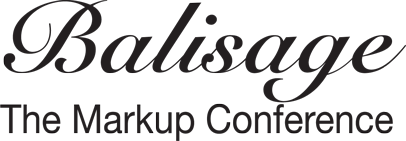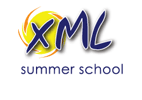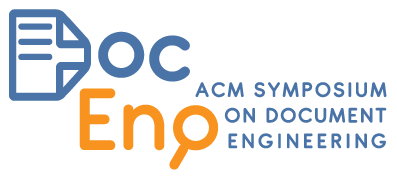Schedule for Thursday
| Time | Room RB209 | Room RB210 | Room RB211 |
| 9:00–10:00 | Registration | ||
| 10:00–11:30 | Antenna House Users Meetup oXygen Users Meetup (from 10:45) |
Public XProc WG Meeting: Future Directions | BaseX: Annual User Meetup |
| 11:30–12:00 | Coffee break | ||
| 12:00–13:30 | oXygen Users Meetup | Public XProc WG Meeting: Future Directions | BaseX: Annual User Meetup |
| 13:30–15:00 | Lunch break | ||
| 15:00–16:30 | oXygen Users Meetup | Transpect tutorial | eXist-db Unlike Preconference |
| 16:30–17:00 | Coffee break | ||
| 17:00–18:30 | oXygen Users Meetup | A Trip to the world of Localisation: XLIFF and ITS in Practice | eXist-db Unlike Preconference |
How unconference day will be organized
In both morning and afternoon there will be two 1.5 hour long slots separated by coffee break. Sessions will be running in three parallel rooms. Lunch will be provided for attendees with a full-pass.
Program of respective sessions is completely in hands of session organizer. So any queries about particular session should be directed to the session organizer.
Location
The first conference day takes place in the same venue as the main conference. However it is situated in the different building. It is best to use campus entry from the Italská street. You can see entrance and explore area using Google Streetview.
Just use entrance from Italská street and continue straight inside building until you reach atrium. Then use stairs to go one floor up and then look around for room RB209, RB210 or RB211 (alternatively you can use elevators on the left side and go to the floor marked as 2 on the control panel).
Session details
Antenna House Users Meetup
organized by Michael Miller
Description/purpose: The sessions will give us an opportunity to update users on the current and future status of Antenna House Formatter. We will start with what is new or expected in Antenna House Formatter V6.3 and then ask users what they would like to see in V7. We’ll take a look at both CSS and XSL-FO. There will be information about the many other useful tools available from Antenna House including: focheck (XSL-FO validation using Relax NG and Schematron); AHRTS (Antenna House Regression Testing System – Winner of the 2013 DemoJam); FSI (Formatter Server Interface); the bat collection; scrambler, etc. We will also be inviting users to demonstrate their use of XSL-FO or CSS to produce paged media output and showcase a
formatted document or publication.
oXygen Users Meetup
organized by George Bina
The oXygen users meetup is a great opportunity to meet oXygen developers as well as other oXygen users. The various sessions we host cover both how oXygen supports you for XML development and XML authoring, presented by our developers and we always try to invite also some of our users to share their experience.
» See more detailed schedule
BaseX: Annual User Meetup
organized by Christian Grün
Once again, we are happy to welcome you to our annual BaseX Users Meetup. You will have the great chance to listen and talk to other BaseX developers. We start with an overview on what has changed in BaseX in the last 12 months. After that, you will be listening to selected talks and find out more how they BaseX is used in various commercial, academic and private environments. We are still interested in your contributions. You are invited to contact info@basex.org.
Public XProc WG Meeting: Future Directions
organized by Norman Walsh
The XProc WG seeks public input on future directions for the language.
eXist-db Unlike Preconference
organized by Leif-Jöran Olsson
Knowledge sharing with presentations form core contributors and members
of our community. Both within the proposed themes Publishing, Markup and
the Extensible Web, and XML performance and other themes and subjects.
Transpect tutorial
organized by Gerrit Imsieke
transpect is an XSLT/XProc framework with a focus on publishing workflows. In particular, it provides support for XML vocabularies such as DocBook, TEI, and JATS/BITS, and for converting from and to XML-based formats such as IDML, OOXML, and EPUB.
Taking a docx→JATS→EPUB conversion workflow as an example, this step-by-step tutorial will teach you how to set up an XProc pipeline from the open-source building blocks that transpect provides.
transpect consists of these XProc/XSLT libraries, plus methodology, where methodology primarily consists of cascaded configuration and HTML reports. The configuration cascade provides a canonical way to store, re-use and override different XSLT, Schematron, CSS, …, settings for different production lines, for example journals and books or distinct book series. HTML reports provide a uniform presentation of Schematron and RNG validation messages in the context of the original content, rendered as HTML.
The tutorial will conclude with methods for documenting and deploying your conversion/checking pipelines.
Since the tutorial will touch many details only cursorily, its code and prose will also be published and documented in depth on http://transpect.github.io/, alongside the transpect modules.
A Trip to the world of Localisation: XLIFF and ITS in Practice
organized by Soroush Saadatfar
The global market is now accessible easier than ever; thanks to the Internet, the produced content can be offered to the end user almost anywhere on the planet. However, localized content will have maximized effectiveness and usefulness in the targeted locale after the process of adaptation to the local market (Localisation). The Localisation Industry is relatively a new field, but growing extremely fast and gaining more importance nowadays as more companies/content producers express will to introduce themselves to the global market.
XML has become a well established solution platform in the localisation industry; various XML based standard vocabularies were developed and successfully adopted since the inception of XML. XML’s internationalization capabilities, like the support of Unicode, offers a foundation to satisfy market’s needs.
XML Localisation Interchange File Format (XLIFF) and Internationalization Tag Set (ITS) are the most common and successful standards in localisation. XLIFF and ITS are both XML-based delivered by OASIS and W3C respectively. The first session of this program is dedicated to introduction and usage of XLIFF and ITS in practice. The users will have the opportunity to familiarize themselves with the localisation workflow and experience how it works in the real world. The implicit goal of the first session is to highlight role of validation in the localisation workflow as well as problematic aspects of XLIFF in terms of XML validation.












